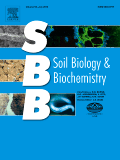
SOIL BIOLOGY & BIOCHEMISTRY
Scope & Guideline
Unveiling the Secrets Beneath Our Feet
Introduction
Aims and Scopes
- Soil Microbial Ecology:
Research on the diversity, composition, and functional roles of microbial communities in various soil environments, exploring how these communities interact with plants and other soil organisms. - Soil Biochemical Processes:
Studies focusing on the biochemical pathways and processes that govern nutrient cycling, organic matter decomposition, and soil respiration, emphasizing the role of enzymes and microbial metabolism. - Plant-Soil Interactions:
Investigations into how plant roots and associated microbial communities influence soil health, nutrient availability, and carbon dynamics, including studies on root exudates and mycorrhizal associations. - Impact of Environmental Changes:
Research examining the effects of climate change, land use, and anthropogenic activities on soil biota and biogeochemical cycles, including studies on nutrient leaching, greenhouse gas emissions, and soil fertility. - Soil Remediation and Health:
Papers discussing strategies for improving soil health and fertility, including the use of organic amendments, biochar, and sustainable agricultural practices to enhance soil ecosystem services.
Trending and Emerging
- Microbial Community Dynamics:
There is an increasing focus on understanding the dynamics of microbial communities in response to environmental changes, land use practices, and interactions with plants, highlighting the importance of microbial diversity for ecosystem resilience. - Soil Carbon Cycling:
Research on soil carbon dynamics, including the mechanisms of carbon stabilization and the role of microbial necromass in organic matter formation, is gaining traction as concerns about climate change and carbon sequestration become more urgent. - Soil Biogeochemistry in Global Change Contexts:
Emerging studies are addressing how global change factors, such as climate warming and nitrogen deposition, influence soil biogeochemical processes, particularly in relation to greenhouse gas emissions and nutrient cycling. - Innovative Soil Management Practices:
There is a trend towards exploring innovative soil management practices, including the application of biochar, cover cropping, and organic amendments, aimed at enhancing soil health and mitigating negative environmental impacts. - Integration of Technology in Soil Research:
The use of advanced technologies, such as molecular techniques and soil sensors, to study soil microbial communities and biogeochemical processes is becoming more prevalent, allowing for more precise and real-time assessments of soil health.
Declining or Waning
- Traditional Soil Chemistry:
Research focused primarily on classical soil chemistry aspects, such as nutrient content and pH, has decreased as more integrative approaches that consider biological interactions and ecosystem functions gain prominence. - Single-Factor Analyses:
Studies that examine isolated factors (e.g., only nitrogen inputs or only temperature effects) without considering the broader ecological context are appearing less frequently, as there is a shift towards more holistic, systems-based approaches. - Static Soil Properties:
Research that emphasizes static measurements of soil properties (such as bulk density or texture) without relating them to dynamic biological processes or ecosystem services is declining in favor of studies that connect soil properties to microbial activity and ecosystem functioning.
Similar Journals

Soil Systems
Connecting Science and Soil: Bridging Theory with PracticeSoil Systems, published by MDPI, is a premier open access journal dedicated to advancing the understanding of soil science and earth-surface processes. Launched in 2017, this journal has quickly established itself with a strong presence in the academic community, holding a prestigious Q1 ranking in both Earth-Surface Processes and Soil Science as of 2023. With an impressive Scopus rank in the top 20% of its categories, Soil Systems is an essential platform for disseminating groundbreaking research addressing the challenges and complexities of soil management, its ecological significance, and its role in sustainable development. The journal operates under an open access model since 2018, ensuring maximum visibility and accessibility for researchers, professionals, and students alike. Based in Switzerland, at ST ALBAN-ANLAGE 66, CH-4052 BASEL, Soil Systems encourages contributions that promote interdisciplinary collaboration, innovative methodologies, and the application of findings to real-world issues related to soil health and environmental sustainability.

REVISTA BRASILEIRA DE CIENCIA DO SOLO
Cultivating Knowledge for Tomorrow's Soil ChallengesREVISTA BRASILEIRA DE CIENCIA DO SOLO, published by the SOC BRASILEIRA DE CIENCIA DO SOLO, serves as a vital open-access platform for disseminating impactful research in the fields of Agronomy and Soil Science. With an ISSN of 0100-0683 and an E-ISSN of 1806-9657, this journal has been fostering academic dialogue since 2003 and has gained recognition as a Q2 journal in both Agronomy and Soil Science as of 2023. Based in Brazil and actively supporting scientists and practitioners globally, it is uniquely positioned to address the challenges and innovations in soil management and cultivation practices. The journal's Scopus rankings reflect its commitment to quality, standing at #164/406 in Agronomy and Crop Science and #74/159 in Soil Science, placing it in the top quartile of its category. Researchers, professionals, and students are encouraged to contribute their findings and insights, making it a significant resource for anyone interested in advancing the science of soil and crop stewardship.

Soil & Environment
Empowering Knowledge for Sustainable Soil ManagementSoil & Environment is a distinguished open access journal published by the University of Agriculture, Institute of Soil & Environmental Sciences, located in Faisalabad, Pakistan. Established in 2006, this journal has become a vital platform for disseminating pioneering research in the fields of Environmental Science and Soil Science. With an ISSN of 2074-9546, it provides a wealth of knowledge through accessible academic articles, particularly focusing on sustainable practices and innovations that impact soil and environmental health. Although currently categorized in Q4 within both Environmental Science (miscellaneous) and Soil Science, the journal is dedicated to enhancing its influence and visibility as it progresses towards convergence years that span from 2010 to 2024. Researchers, professionals, and students will find Soil & Environment an essential resource for staying informed about the latest developments and methodologies in soil conservation and environmental sustainability. By offering publicly accessible content, the journal aims to foster greater collaboration and knowledge-sharing within the global scientific community.

Spanish Journal of Soil Science
Exploring Innovations in Soil ResearchThe Spanish Journal of Soil Science is a prestigious open-access journal published by FRONTIERS MEDIA SA since 2011. Based in Switzerland, this journal serves as a vital platform for disseminating innovative research and applications within the field of soil science. With its commitment to accessibility, the journal enables researchers, professionals, and students from around the globe to contribute to and benefit from its wealth of knowledge. As of 2023, it holds a respectable Q3 category ranking in soil science and is positioned at #88 out of 159 in the Scopus rankings for Agricultural and Biological Sciences. The journal aspires to foster collaboration and communication among soil scientists, encouraging the exploration of contemporary soil issues, sustainable practices, and advancements in technology. Its open-access model ensures that the latest findings are freely available, promoting a broader impact in environmental and ecological studies.
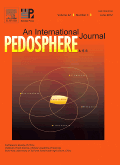
PEDOSPHERE
Unveiling the Secrets Beneath Our FeetPEDOSPHERE, published by SCIENCE PRESS, is a leading journal in the field of Soil Science, holding a prestigious position in the Q1 category as per the latest evaluations, reflecting its high impact and relevance in the domain. Established in 1996, this journal is committed to advancing our understanding of soil-related processes and their interactions with various environmental components, providing a platform for innovative and high-quality research. With an impressive rank of #13 out of 159 in the Scopus classifications for Agricultural and Biological Sciences, PEDOSPHERE reaches the 92nd percentile, indicating its significance among scholarly publications. Although the journal operates under traditional access options, it remains an essential resource for researchers, professionals, and students keen on exploring the complexities of soil dynamics and sustainability. By bridging interdisciplinary methodologies and fostering collaboration, PEDOSPHERE plays a vital role in addressing global challenges related to soil management, conservation, and ecological balance.
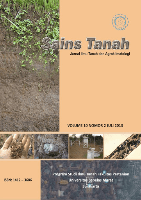
SAINS TANAH
Cultivating Knowledge for a Sustainable FutureSAINS TANAH is a renowned peer-reviewed journal that focuses on the fields of agronomy, soil science, and environmental studies, published by Universitas Sebelas Maret Surakarta in Indonesia. Established as an Open Access platform since 2001, it aims to disseminate high-quality research that addresses critical issues in soil health, crop management, and pollution, thereby fostering sustainable agricultural practices. With its current impact factor demonstrating a Category Quartile ranking of Q3 and Q4 in major areas such as Agronomy and Crop Science, Atmospheric Science, and Pollution, SAINS TANAH serves as an essential resource for researchers, professionals, and students dedicated to advancing knowledge and solutions in these vital fields. By providing a collaborative environment and upholding rigorous academic standards, the journal not only highlights the significance of Indonesian research contributions but also aims to connect local insights with global agricultural and environmental challenges.

JOURNAL OF SOILS AND SEDIMENTS
Exploring the Foundations of Earth SciencesJOURNAL OF SOILS AND SEDIMENTS, published by SPRINGER HEIDELBERG, stands as a premier interdisciplinary platform dedicated to advancing the understanding of soil and sediment dynamics within the broader context of Earth sciences. With an impressive impact factor and a Q1 ranking in both Earth-Surface Processes and Stratigraphy, this journal not only reflects the high quality of research but also contributes significantly to the dialogue amongst researchers, professionals, and students in the field. The journal encompasses a wide spectrum of topics from sedimentology to soil science, making it essential reading for those involved in environmental management, agriculture, and geology. Access options are available to ensure that cutting-edge research is accessible to a global audience, reflecting the journal's commitment to fostering collaboration and innovation. As we converge towards 2024, JOURNAL OF SOILS AND SEDIMENTS aims to continue its role in shaping scientific inquiry and policy formulation concerning the vital roles of soils and sediments in ecological and geological systems.

CANADIAN JOURNAL OF SOIL SCIENCE
Cultivating Insights for Healthier EcosystemsThe Canadian Journal of Soil Science (ISSN: 0008-4271, E-ISSN: 1918-1841) is a premier publication in the field of soil science, proudly published by Canadian Science Publishing. Established in 1974, this esteemed journal aims to promote high-quality research and insights into the dynamic interactions within soil ecosystems, addressing pressing issues such as soil health, management, and sustainability. With an impressive 2023 category quartile ranking of Q2 in Soil Science and a Scopus ranking placing it in the 52nd percentile, this journal stands out as a key resource for researchers, professionals, and students alike. Although currently not open access, the journal provides valuable content that contributes to advancing the understanding of soil science, an essential discipline for agricultural innovation and environmental stewardship. As we approach its converged years through 2024, the Canadian Journal of Soil Science is poised to continue its pivotal role in disseminating impactful research and fostering a community dedicated to soil science excellence.
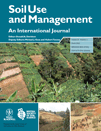
SOIL USE AND MANAGEMENT
Elevating research in agronomy and soil science.SOIL USE AND MANAGEMENT is a premier academic journal published by Wiley, focusing on the critical domains of Agronomy, Crop Science, Pollution, and Soil Science. With an ISSN of 0266-0032 and an E-ISSN of 1475-2743, the journal has established itself as a vital resource in the field since its inception in 1985. Operating from its U.S. headquarters in Hoboken, NJ, SOIL USE AND MANAGEMENT boasts impressive Q1 rankings across its relevant categories, indicating its standing in the top tier of research journals. Notably, it is ranked 48th out of 406 journals in Agronomy and Crop Science and holds an 88th percentile position, as well as a commendable rank of 26th out of 159 journals in Soil Science, underscoring its influence and reach. This journal serves as an essential platform for researchers, professionals, and students dedicated to sustainable soil management practices and understanding soil's role in agricultural productivity and environmental health. Although it does not offer Open Access, its rigorous peer-review process ensures the publication of high-quality original research, reviews, and case studies critical for advancing knowledge and practice in the field. This journal is crucial for anyone engaged in soil science and its related disciplines, encouraging innovative approaches to challenges facing soil use and management today.
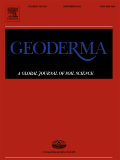
Geoderma
Elevating Soil Science to New HeightsGeoderma is a leading academic journal published by ELSEVIER, focused on the vital field of Soil Science. With an impressive impact factor and ranking as Q1 in its category for 2023, this journal stands as a prominent platform for researchers and professionals seeking to explore advanced scientific studies related to soil and its relationships with the ecosystem. Covering a wide range of topics from soil formation and characterization to land use and management practices, Geoderma is recognized for its rigorous peer-review process and is highly regarded within the global scientific community, as evidenced by its ranking of #12 out of 159 in the Scopus categories of Agricultural and Biological Sciences and Soil Science, placing it in the top 92nd percentile. With its inception dating back to 1967, the journal continually adapts and converges its content to meet the evolving demands of soil research until 2024 and beyond, providing invaluable insights for students, professionals, and researchers alike.